Is your roof leaking like a sieve? Don’t worry – you’re not alone. A leaky roof is a homeowner’s nightmare, but it’s fixable. This guide will show you how to maintain your roof like a pro.
Ready to become a roof-whisperer? Let’s go!
Key Takeaways
Check your roof twice a year, in spring and fall, to catch small issues early. Professional inspections cost about $230 on average.
Clean your roof and gutters regularly. Sweep the roof twice yearly and clean gutters every three months if you have nearby trees.
Trim overhanging tree branches to prevent damage from storms, high winds, and snow-laden limbs.
Prepare your roof for winter by clearing debris, checking for damaged shingles, and ensuring proper attic insulation to prevent ice dams.
Fix roof damage promptly and use protective coatings to extend your roof’s lifespan. Always follow safety guidelines when doing roof work, including wearing proper gear and avoiding bad weather.
Table of Contents
Conducting Regular Roof Inspections and Cleaning

Regular roof check-ups are a must. They’ll catch small issues before they become big headaches.
Schedule Routine Inspections for Your Roof and Attic

Guys, let’s talk about keeping your roof in top shape. Twice a year, spring and fall, you need to get a pro up there to check things out. It’s like giving your car a tune-up, but for your house.
These check-ups help catch small issues before they turn into big, wallet-draining problems. The average cost? About $230 – a small price to pay for peace of mind.
Don’t forget about your attic! Start your own inspections there. Look for any signs of water damage or daylight peeking through where it shouldn’t be. Keep a record of what you find – it’ll come in handy down the road.
And if you spot something fishy, don’t hesitate to call in the experts for roof repairs in Perth or wherever you’re located.
Now, let’s move on to keeping that roof clean and tidy.
Maintain Cleanliness of Roof Surfaces and Gutters
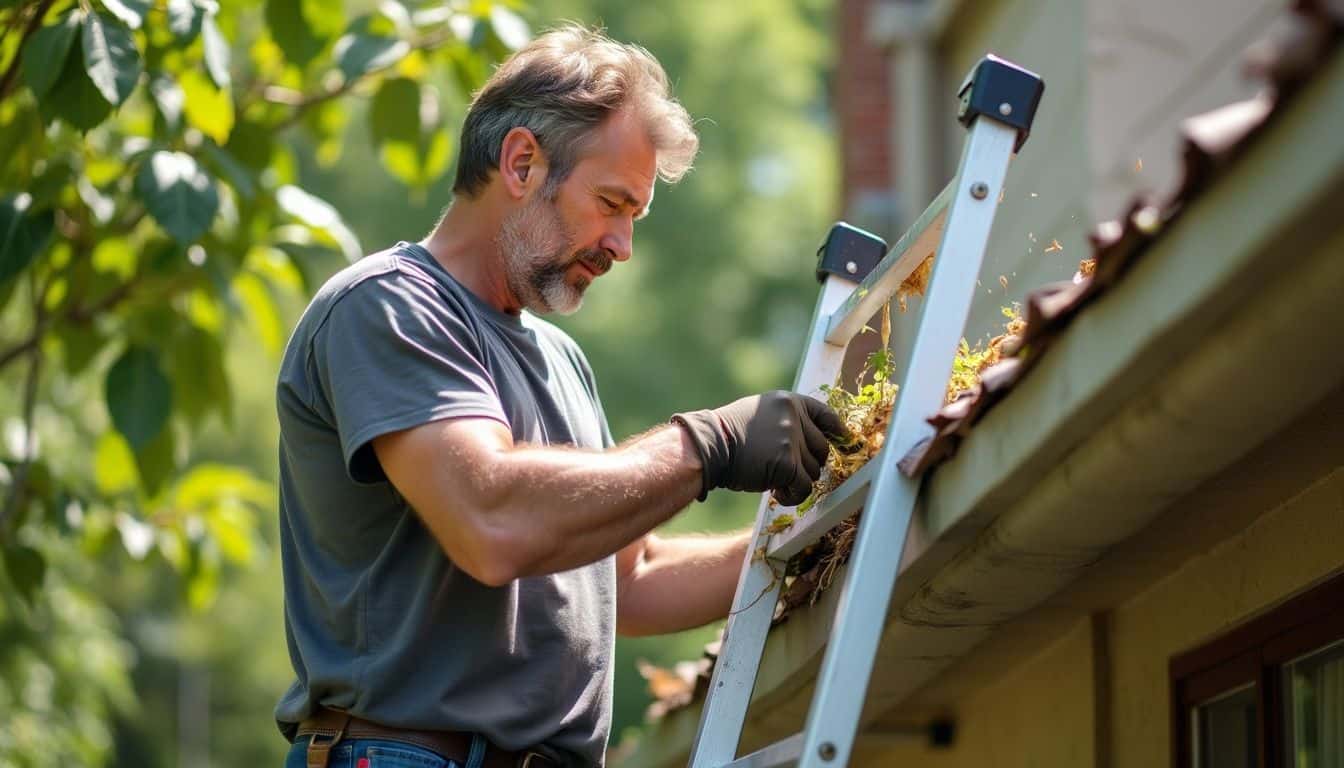
Keeping your roof clean is a big deal. Dirt, leaves, and other junk can mess up your shingles and let mold grow. It’s smart to sweep off your roof at least twice a year. While you’re up there, don’t forget about your gutters.
They need cleaning too – every three months if you’ve got trees nearby. Clogged gutters can cause water to back up and damage your roof or walls.
A clean roof is a happy roof.
Gutter screens can be a real game-changer. They keep out most of the debris, so you won’t have to clean as often. But even with screens, you’ll still need to check things out now and then.
Water needs a clear path off your roof to prevent damage. Next up, let’s talk about how to stop plants from taking over your roof.
Implementing Preventative Roof Maintenance

Keeping your roof in top shape isn’t just about fixing leaks. It’s about stopping problems before they start. A little TLC now can save you big bucks – and headaches – down the road.
Address Plant Growth on Your Roof
Plant growth on your roof can be a real pain. Moss, algae, and lichen love to make themselves at home up there. But don’t worry – you can kick these unwanted guests to the curb. First, grab a stiff brush and some water to scrub away the green stuff.
For tougher spots, use a mix of water and bleach. Just be careful not to damage your shingles!
Once you’ve cleaned up, it’s time to play defense. Trim back any overhanging tree branches. They’re like a welcome mat for roof plants. Also, consider zinc strips along your roof’s peak.
When it rains, they release stuff that plants hate. Trust me, I’ve used this trick on my own roof, and it works like a charm. Keep an eye out for any new growth and tackle it fast.
Your roof will thank you!
Trim Overhanging Trees to Reduce Roof Damage
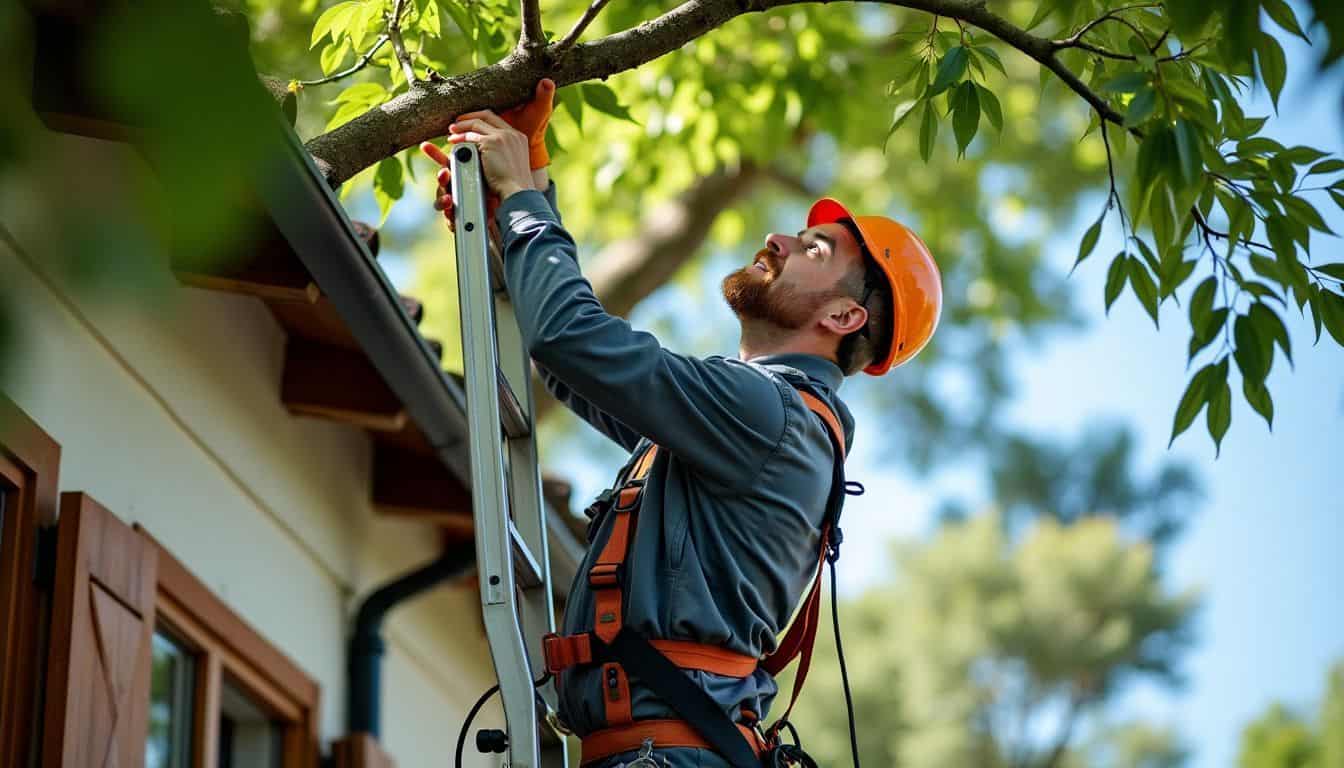
Now that we’ve tackled plant growth, let’s talk about those pesky trees. Trimming overhanging branches is a must-do for any roof-savvy homeowner. I learned this the hard way when a storm sent a huge limb crashing onto my shingles.
Trust me, it’s not a fun wake-up call!
Trees near your house can be a real pain for your roof. Those branches hanging over your shingles? They’re like nature’s wrecking balls during high winds. Plus, they’re a highway for critters to get onto your roof.
Trim ’em back, and you’ll slash your risk of damage. It’s not just about storms, either. Snow-laden branches can sag and scrape your roof, too. Regular pruning is key to keeping your roof safe and sound.
A well-trimmed tree is a roof’s best friend. – Old roofer’s saying
Maintain Soffits, Fascia, Gutters, and Downspouts Effectively
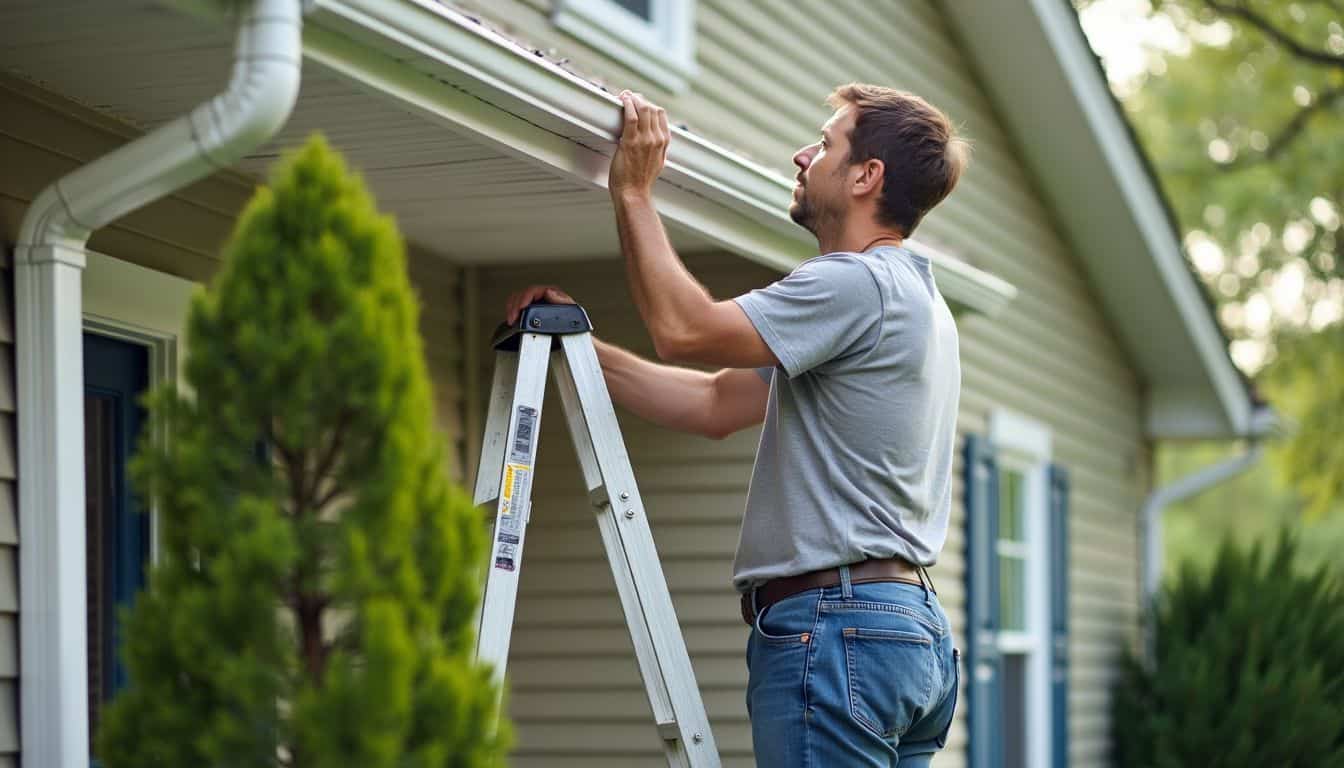
After trimming those pesky trees, let’s talk about the unsung heroes of your roof. Soffits, fascia, gutters, and downspouts play a crucial role in keeping your home dry. These parts work together to move water away from your house.
Soffits and fascia protect the edges of your roof, while gutters and downspouts channel water to the ground. To keep them in top shape, give them a good look-over every few months.
Clean out any leaves or twigs from your gutters. Check for loose or damaged parts and fix them pronto.
Don’t forget about gutter screens – they’re a game-changer. These handy devices keep debris out of your gutters, making your job easier. With clean gutters and downspouts, water flows freely, preventing damage to your home’s foundation.
Keep an eye out for missing or cracked shingles too. And don’t ignore the flashing around chimneys and vents. A little TLC for these roof parts goes a long way in avoiding big headaches down the road.
Seasonal Roof Maintenance Tips
Seasons can be tough on your roof. Let’s dive into some handy tips to keep your roof in top shape all year round – from battling winter’s icy grip to summer’s scorching heat.
Prepare Your Roof for Winter Conditions
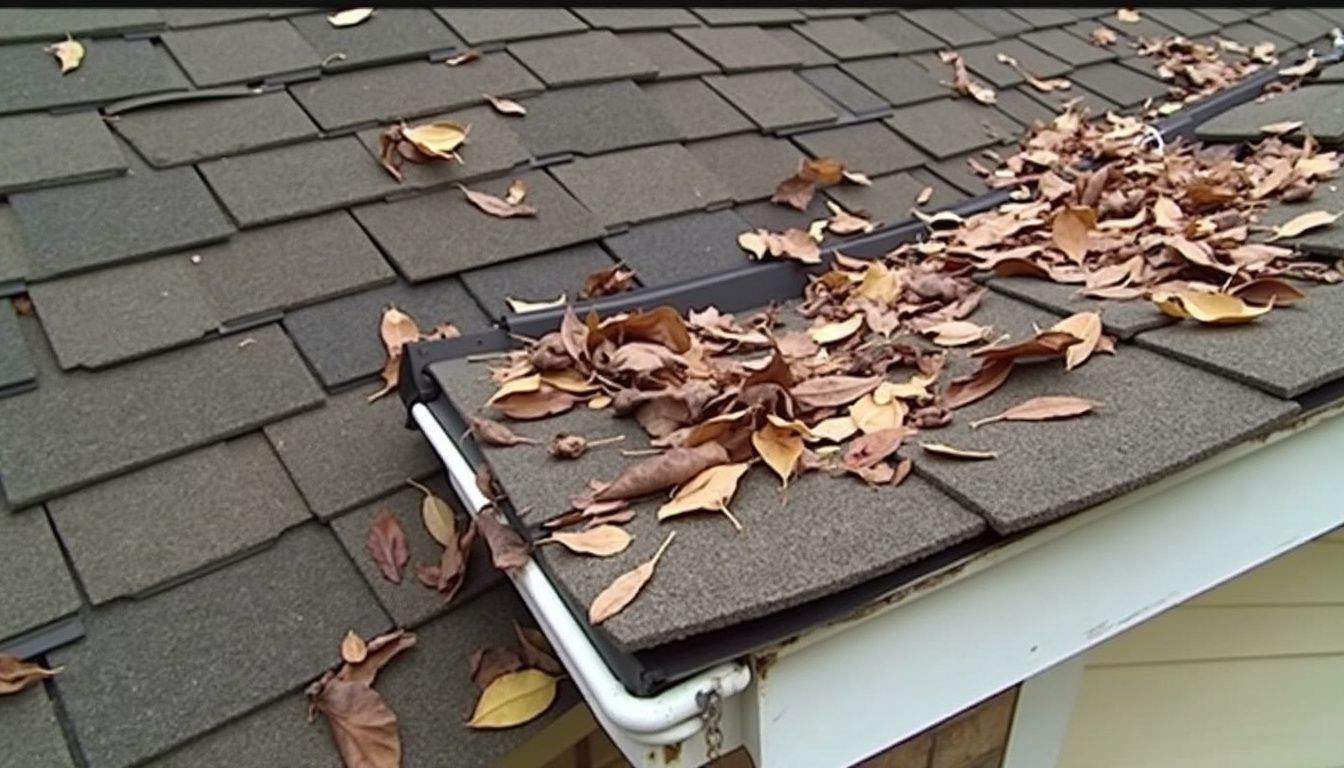
Winter’s coming, and your roof needs to be ready. Start by clearing off any leaves, twigs, or other junk. This helps stop ice dams from forming. Next, check for damaged or missing shingles.
Replace them pronto to avoid leaks. Don’t forget your gutters – clean ’em out, so melting snow can flow freely.
Insulation is key to a cozy home and a happy roof. Peek in your attic for wet spots or damage. Good insulation keeps heat in and ice dams out. If you’re unsure about your roof’s snow-holding power, call a pro.
They’ll tell you if you need extra support. As my old man used to say:.
An ounce of prevention is worth a pound of cure.
Smart advice, especially for your roof.
Techniques to Prevent Ice Dam Formation
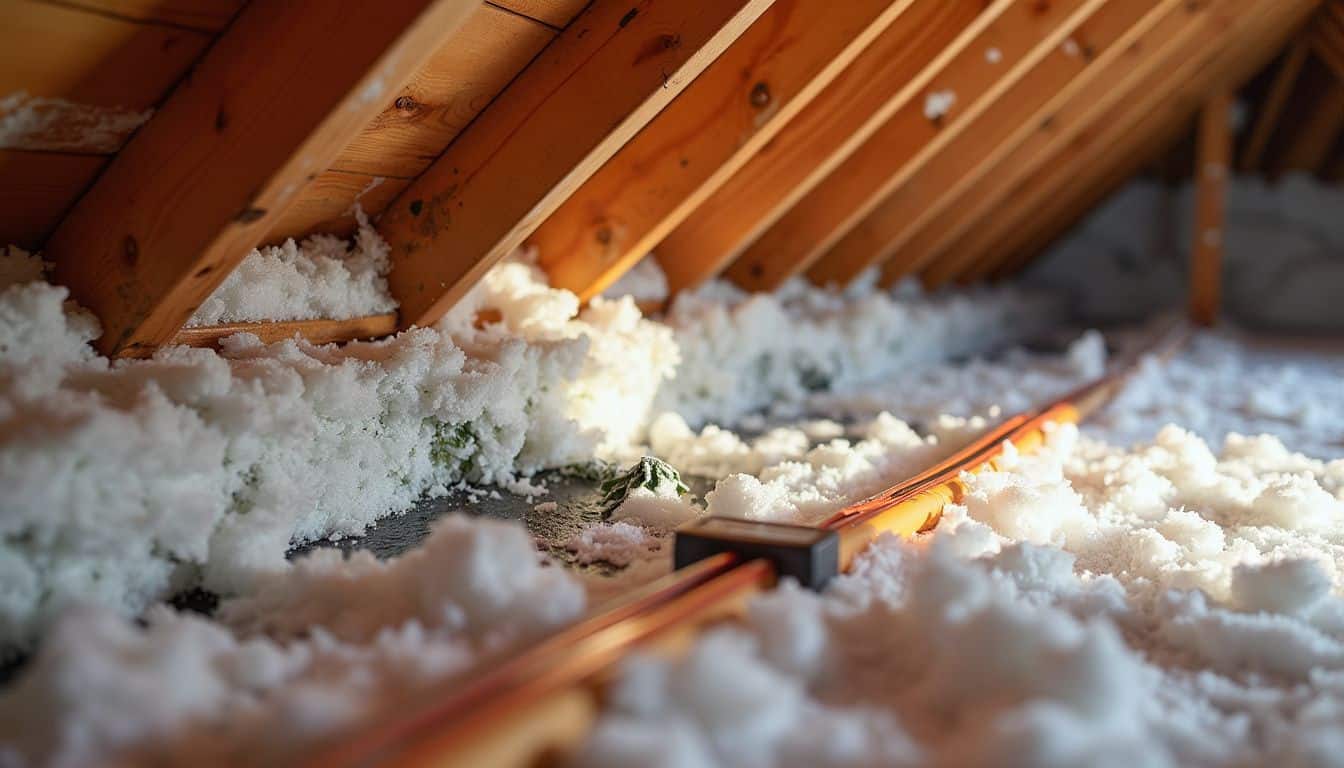
Ice dams can wreak havoc on your roof. But don’t sweat it, guys! There are some simple tricks to keep those icy menaces at bay. First off, make sure your attic’s breathing easy. Good ventilation and insulation are key players here.
They help keep your roof’s temp even, which stops those pesky ice dams from forming.
For the tough winter spots, ice and water barriers are your best pals. Slap these on, and you’ve got extra protection where you need it most. Heat cables are another nifty tool. Pop these along your roof’s edges, and they’ll melt ice before it can cause trouble.
With these tips, you’ll be the king of winter-proof roofs in no time!
Timely Roof Repairs and Protective Measures

Don’t let small roof issues turn into big headaches. Quick fixes and smart protection can save you a ton of cash – and stress – down the road.
Promptly Repair Roof Damages
Roof damage is no joke. It can turn your cozy home into a leaky mess faster than you can say “bucket brigade.” I learned this the hard way when a small crack in my roof turned into a waterfall during a storm.
Don’t wait for disaster to strike. Fix those pesky roof issues pronto! Missing shingles, visible leaks, or a sagging roofline? Those are red flags, mate. Grab your tools and get to work, or call in the pros if you’re not comfortable up high.
Trust me, it’s way cheaper to fix a small problem now than to deal with a full-blown roof crisis later.
Speaking of pros, they recommend checking your roof twice a year – spring and fall are prime time. It’s like giving your house of your dreams a health check-up.
Look out for wear and tear from harsh weather or falling debris. And don’t forget about those sneaky leaks that can pop up out of nowhere. A stitch in time saves nine, as they say.
So, keep your eyes peeled and your repair kit ready. Your wallet (and your dry head) will thank you later.
Utilize Protective Coatings and Sealants for Your Roof
Guys, let’s talk about beefing up your roof’s armor. Protective coatings and sealants are like a shield for your shingles. They fight off UV rays and keep moisture at bay. Think of it as sunscreen for your house – it stops the sun from aging your roof too fast.
These products can plug small leaks before they become big headaches.
Don’t wait until you see problems to act. Slap on these protectors early, and you’ll dodge costly fixes down the road. It’s like changing your car’s oil – a little upkeep now saves a ton later.
Plus, you’ll stretch your roof’s life, giving you more years before you need to shell out for a new one. Now, let’s chat about staying safe while you’re up there working on your roof….
Safety Protocols for Roof Maintenance

Safety first, folks! Roof work ain’t no joke – one wrong step, and you’re in for a world of hurt. Let’s chat about keeping your noggin intact while you’re up there fixing those shingles.
Adhere to Safety Guidelines for Roof Maintenance Work
Roof work can be risky business. That’s why it’s crucial to follow safety rules. First, always use proper gear. This means wearing a sturdy harness and non-slip boots. Also, never work alone.
Have a buddy on the ground to help if needed. It’s smart to avoid roof work in bad weather too. Rain or strong winds can make things extra dangerous.
Watch where you step up there. Stay clear of flashings and those see-through panels. They’re not made for walking on. Too much foot traffic can harm your roof, especially on low slopes.
Follow the rules set by safety groups like OSHA. They’re experts in keeping you safe while working high up. A safe roofer is a happy roofer!
People Also Ask
How often should I clean my roof?
Clean your roof at least twice a year. It’s like giving your car a wash – regular care keeps it running smooth. Remove leaves, twigs, and other junk that can turn your rooftop into a breeding ground for moss and algae. This simple task can save you from costly repairs down the road.
What’s the deal with roof flashing?
Roof flashing is the unsung hero of your home’s defense system. It’s like the duct tape of roofing – sealing gaps around chimneys, vents, and skylights. Check it regularly for cracks or rust. If you spot trouble, don’t wait. Fix it fast to keep water out of your attic or basement.
How do I know if my roof needs replacing?
Look for warning signs. Curling or missing shingles are red flags. If your roof is pushing 20-25 years old, it might be time for a fresh start. Think of it like this: if your roof were a person, it’d be old enough to vote! Consider upgrading to metal roofs for longer life, especially if you live in hurricane-prone areas.
Can I DIY my roof maintenance?
Some tasks are DIY-friendly, like cleaning gutters or pruning nearby trees. But for the big stuff, call in the pros. They’ve got the know-how and gear to handle tricky jobs safely. It’s better to spend a little on maintenance than a lot on hospital bills!
How important is roof ventilation?
Roof ventilation is crucial – it’s like letting your house breathe. Good airflow keeps your attic cool and dry, preventing mold growth and extending the life of your roofing materials. It also helps your HVAC system work more efficiently. So, make sure those vents are clear and working properly.
References
https://overthetoproofing.com/blog/roof-inspections/routine-roof-inspections-maintenance/
https://www.renownconstruction.com/blog/10-maintenance-tips-to-extend-the-life-of-your-roof/
https://www.harbertroofing.com/blog/5-essential-roof-maintenance-tips-every-homeowner-should-know
https://www.thisoldhouse.com/roofing/reviews/roofing-maintenance-tips (2024-06-25)
https://stradroofing.com/roofing-maintenance-tips/
https://www.searshomeservices.com/blog/roof-maintenance-tips-you-need-to-know
https://www.rayzorsedgetreeservice.com/prevent-roof-damage-from-trees/ (2024-01-22)
https://www.angi.com/articles/what-can-i-do-maintain-my-roof.htm
https://www.ableroof.com/blog/maintaining-soffit-fascia/
https://www.puroclean.com/blog/5-tips-to-prepare-your-roof-for-winter/
https://www.eiseman.biz/preparing-your-roof-for-winter-5-essential-maintenance-tips/
https://aicroofing.com/blog/how-to-prevent-ice-dams-on-your-roof/
https://www.familyhandyman.com/article/how-to-prevent-ice-dams/
https://prrotectroofing.com/the-importance-of-timely-roof-repairs-preventing-further-damage/ (2024-08-12)
https://www.apcroofing.com/blog/prolong-your-roofings-life-5-essential-maintenance-tips/
https://apexroofingfl.com/annual-home-roof-maintenance/
https://slproofs.com/a-comprehensive-guide-to-prevention-and-solutions-for-roof-leaks/ (2024-04-22)
https://roofaidusa.com/roofing-safety/ (2023-02-20)
